https://medium.com/point-of-decision/all-things-old-are-new-again-d63bc6c67996
It is no secret that the U.S. Army is in a time of change and disruption. It is desperately seeking to emerge from an era unprecedented in Army history: fourteen uninterrupted years of direct conflict in a counter-insurgency (COIN) environment in two theaters, with mobilizations of Reserve Component forces to augment Active Army forces. The Middle East and Southwest Asia have not stabilized by any means, but the U.S. seeks to slowly minimize its involvement there in order to focus on the rest of the world, which is still pretty messy.
During the fourteen years of war, the Army has, in a sense, turned inwards on itself, seeking to crack the nut that is the non-State insurgency. The wars, for the most part, have been fought at the brigade, battalion, and company level, with coordination from division and corps headquarters. It has been a time of small-unit actions, dominated by counter-improvised explosive device (IED) tactics and technology. They have been wars where there were no clear front lines, as nearly every road or base was vulnerable to some type of attack. Normal combat multipliers such as heavy armor and artillery have largely not been used, because of the terrain and the fear of collateral damage. In short, it has been a confusing, uncertain, and different war.
The Army emerges from these wars to face a world that has changed a lot since 2001. Russia has come out of its shell and is taking brinkmanship to a whole new level in Ukraine and Syria, where the raw combat power of artillery and armor is being seen again. China is asserting itself militarily and economically in the Pacific. The so-called Islamic State has taken Al Qaeda’s ideology, given it steroids, and is now rampaging around the Middle East like a drunken, sex-deprived teenager with a psychotic killing streak. In short, the world is a scary place.
In 1972, the Army faced a very similar situation. It was slowly shaking off the tangles of the Vietnam War and rather blearily looking around to see what it had missed over the past ten years of involvement in Southeast Asia. What it saw was alarming, both inside the Army and out. Looking within, the Army was broken. As Major General John J. Hennessey, commandant of the Command and General Staff College, said in 1972, “The Army faces serious problems of manpower, morale, strategy, and leadership. It has entered a period of searching inquiry, of readjustment and redirection.” One solution to this was ending the draft and the beginning of the all-volunteer force, which some say is the greatest thing to ever happen to the Army and others blame for creating the civilian-military divide. Take your pick.
Army tactics and doctrine had also been significantly influenced by Vietnam. In the small hamlets, jungles, and mountains of Southeast Asia, COIN was born. Small unit combat was the norm as the U.S. used mobile helicopter-borne infantry to flush out enemy soldiers from their strongpoints. As in the present day, the Army went COIN-centric. The parallels are by no means exact, as each war presents new and unique circumstances. But by the 1970's, the U.S. Army was not tactically prepared to fight a conventional war in Western Europe.
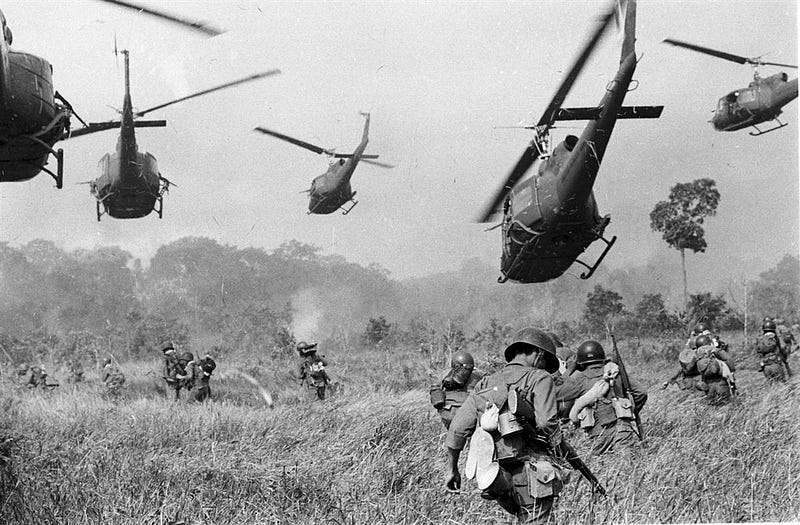 Heli-borne troops inserted into Vietnam (NBC Photo)
Heli-borne troops inserted into Vietnam (NBC Photo)
Another byproduct of the Vietnam War was that the Army was set back nearly a decade in research and technology. Granted, they had perfected a lot of technology in Vietnam, just as the Army has in Iraq and Afghanistan, but it was all specific to that conflict. In the meantime, everyone else, including the U.S.S.R, had advanced apace with modernization in weapons and tactics.
Just how far behind the U.S. was became apparent in the 1973 Arab-Israeli War. Egyptian and Syrian forces sported the latest in anti-tank and anti-air weaponry, courtesy of the Soviet Union. Israel had only the U.S. providing weapons, equipment, and ammunition, but much of these were also of the latest technology. The war was a snapshot of what tank-on-tank warfare looked like and just how devastating modern technology could be on the battlefield, particularly hand-held anti-tank weaponry. Of particular note to U.S. observers was the Egyptian attempt to launch air-mobile attacks with helicopter-borne infantry. These attacks were met with disaster as the Israelis shot down more than fourteen helicopters. For a U.S. Army that was used to using their helicopters for quick mobile insertion, this came as a wake-up call that a modern opponent could render this tactic useless. The brief war (about two weeks) caused an upwards of 10,000 killed, and hundreds of tanks destroyed. The COIN-centric U.S. Army was shocked by the deadly power of conventional warfare.
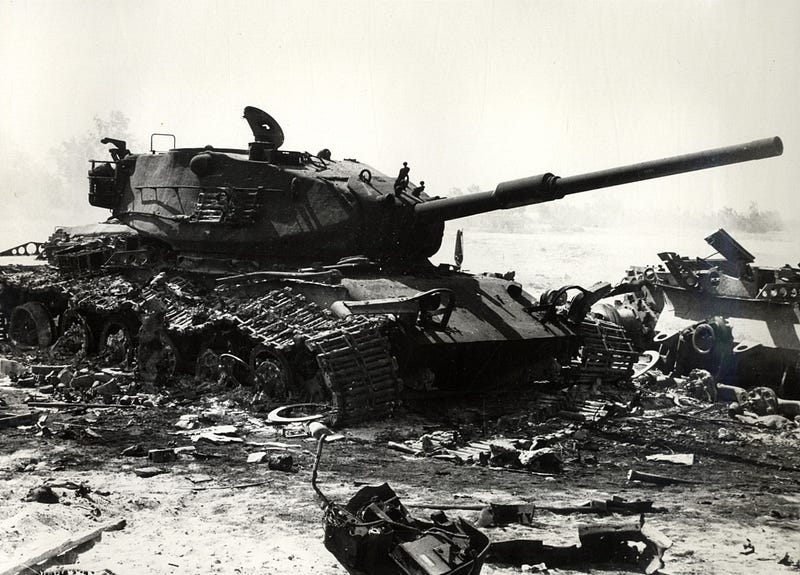 Destroyed Israeli M-60 tank from the 1973 Arab-Israeli War (Wikimedia Commons)
Destroyed Israeli M-60 tank from the 1973 Arab-Israeli War (Wikimedia Commons)
This realization shook up U.S. high command’s plans for a possible war in Western Europe against Soviet Block forces. For years, the U.S. had assumed that it could fight that war in the way that past wars had been fought: Active forces would stabilize the battlefield while waiting on the mobilization of Reserve Component and draft divisions to counterattack. The Israeli-Arab War showed that the first battle would be the key to the conduct of the rest of the war. Strategic planning now focused on winning that first battle. Not only that, but doctrine promulgated in Field Manual 100–5 Operations stated that U.S. troops would fight outnumbered, and that they would win. No small feat, to be sure.
Tactics and task-organization changed to meet this new requirement, as U.S. commanders realized that they needed to be able to fight a fluid, fast-moving defense that exchanged space for enemy casualties, while retaining enough economy of force to mount local counter-attacks where able. No longer was the defense to be static or linear; it was now elastic. It was the birth of the engagement area, where commanders used obstacles and forces to funnel the enemy into a place where his numerical supremacy was negated through terrain or obstacle restrictions, and then destroyed by overwhelming firepower. This was the active defense.
Training followed doctrine. It was the belief of U.S. planners that only through rigorous and realistic training could U.S. forces hope to fight a disciplined battle in Western Europe that would defeat the first thrust of enemy tank divisions. U.S. troops trained and trained and trained in fighting a fluid defense, in realistic exercises across Western Germany. Unit commanders learned every single capability that his opposing Soviet commander had, such as units, manning, and equipment. You can still ask Army officers who were company commanders in Germany in the 1980's about their opposing force, and they can tell you the enemy commander’s name, type and number of armored vehicles, and expected disposition during an attack.
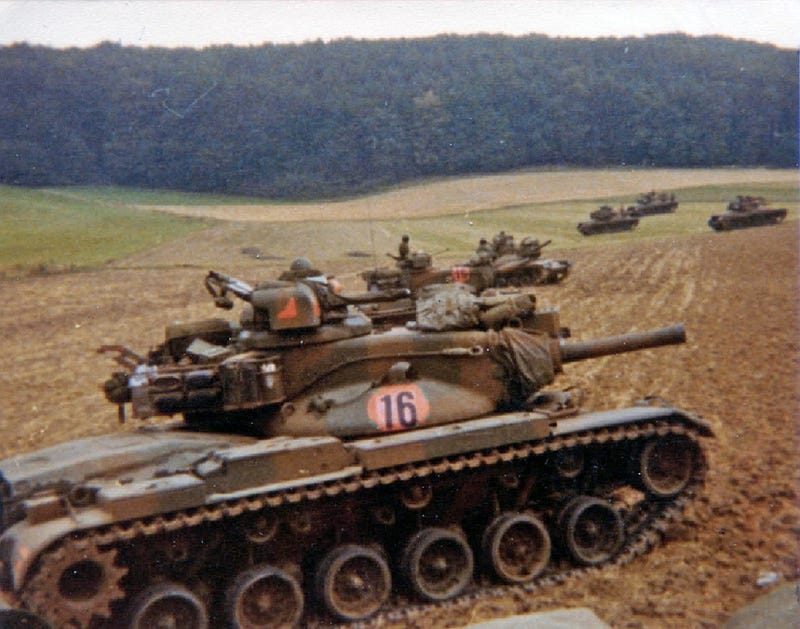 U.S. Armor in Germany, 1980s (U.S. Army Photo)
U.S. Armor in Germany, 1980s (U.S. Army Photo)
Was all this successful? After all, U.S. and Soviet forces thankfully never met for that fateful battle in the Fulda Gap.
In three days of fighting in 1991, the U.S. military and Allied partners completely destroyed the forces of the Iraqi army in conventional warfare across a broad front, suffering incredibly light casualties. This was a radically different Army than the one that emerged from the Vietnam War, two decades prior. Doctrinal and administrative changes had been successfully implemented to create a military powerhouse of destructive capability.
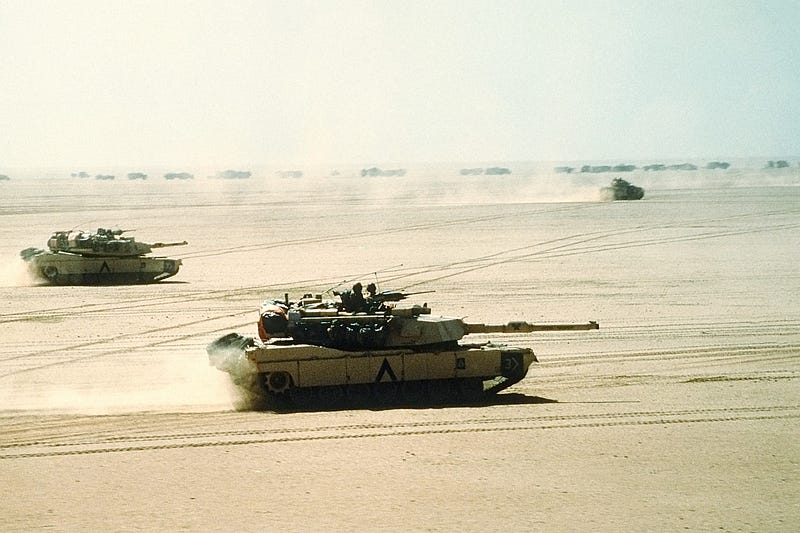 U.S. Armor on the move in Iraq, 1991 (Wikimedia Commons)
U.S. Armor on the move in Iraq, 1991 (Wikimedia Commons)
As the Army views the escalating situations in Syria and Ukraine, it might be recalling 1973 and the realization that warfare can quickly change from low-intensity to high-intensity in a matter of days. What will be telling is if a similar overhaul of doctrine and strategy follows this realization.
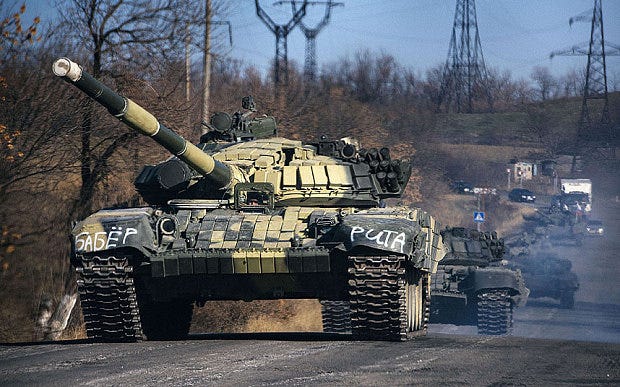 A column of pro-Russian separatists’ tanks travels near the town of Krasnyi Luch in eastern Ukraine on October 28, 2014 (Photo: AFP/Getty)
A column of pro-Russian separatists’ tanks travels near the town of Krasnyi Luch in eastern Ukraine on October 28, 2014 (Photo: AFP/Getty)
https://medium.com/point-of-decision/all-things-old-are-new-again-d63bc6c67996
Angry Staff Officer is an officer in the Army National Guard and a member of the Military Writers Guild. He commissioned as an engineer officer after spending time as an enlisted infantryman. He has done one tour in Afghanistan as part of U.S. and Coalition retrograde operations. With a BA and an MA in history, he currently serves as a full-time Army Historian. The opinions expressed are his alone, and do not reflect those of the U.S. Army, the Department of Defense, or the U.S. Government.
For more from Angry Staff Officer, visit his Wordpress blog site.
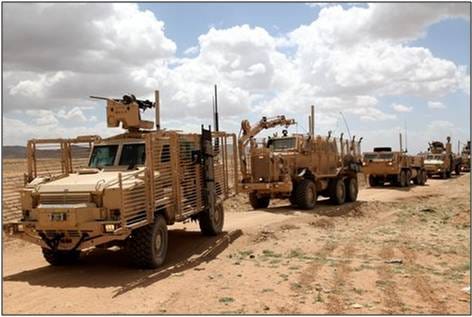
No comments:
Post a Comment